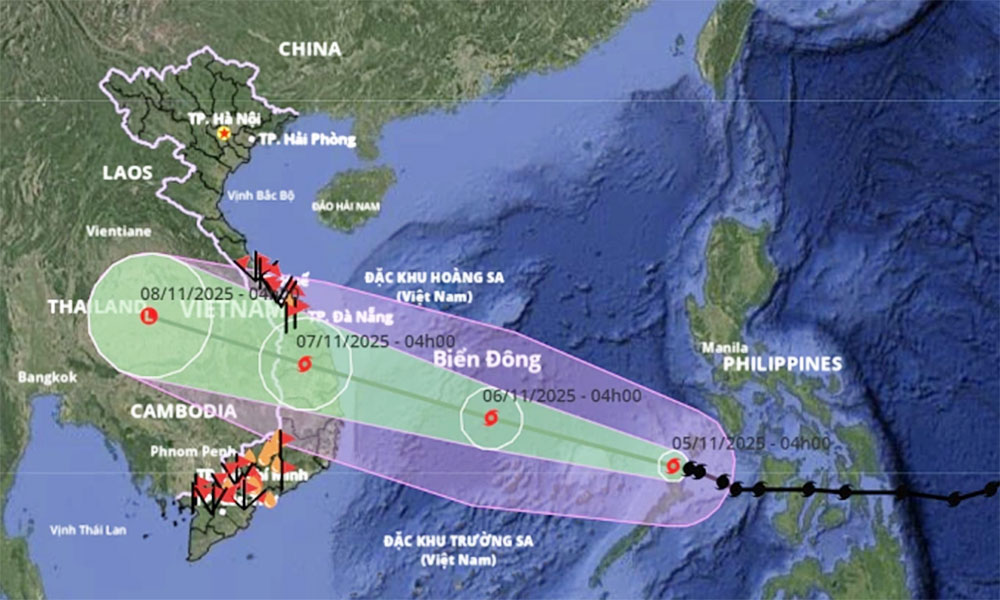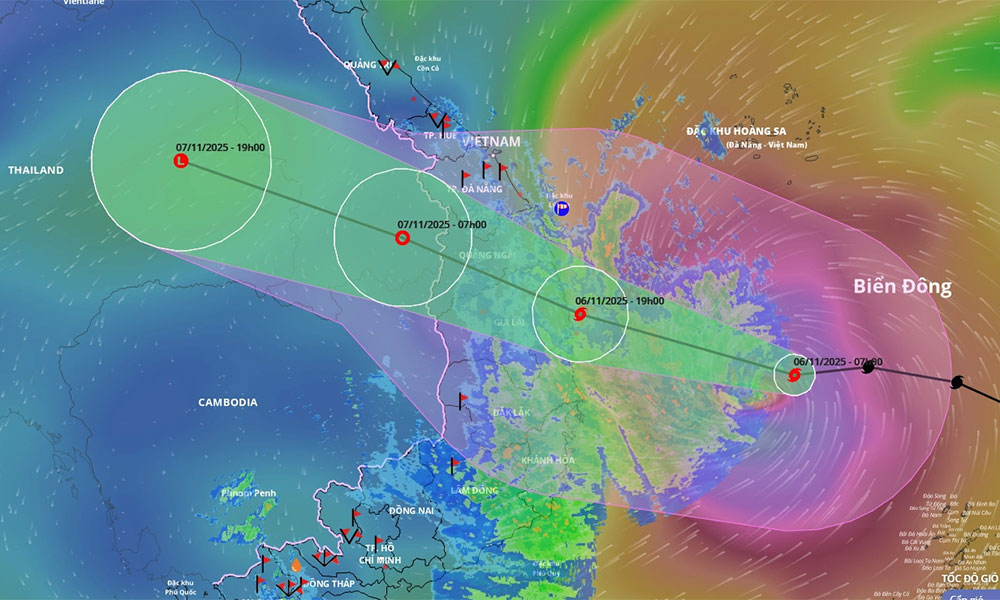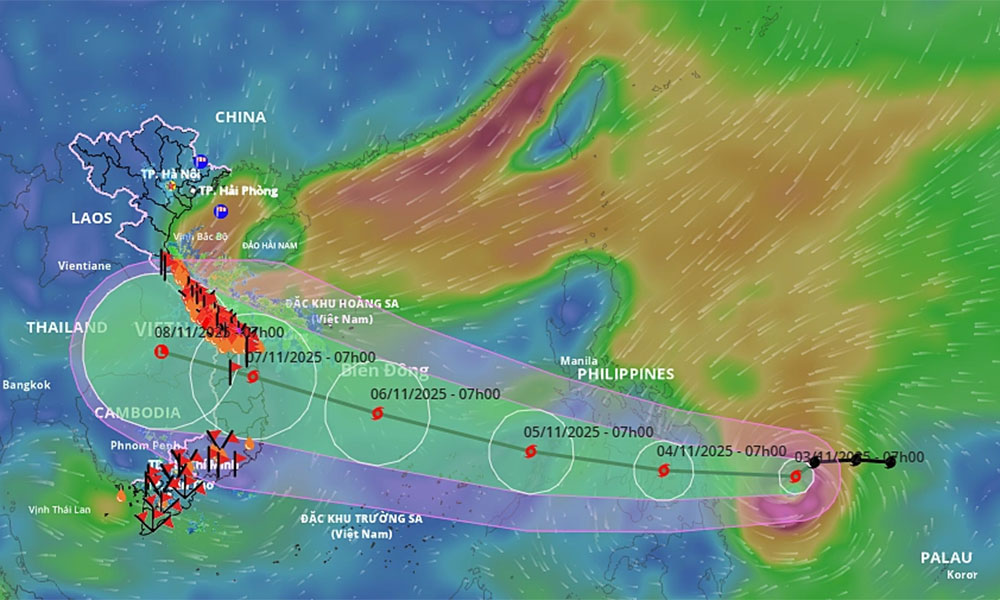Typhoon Kalmaegi enters East Sea, threatens central Vietnam coast
Typhoon Kalmaegi entered the East Sea early Wednesday after crossing the central Philippines, maintaining maximum sustained winds of 134 – 149 kph.
The storm is forecast to strengthen further to 150-166 kph on Thursday as it approaches the waters off Vietnam's south-central coast, stretching from Da Nang to Khanh Hoa, home to Nha Trang.
 |
|
The trajectory of Typhoon Kalmaegi. |
The National Center for Hydro-Meteorological Forecasting (NCHMF) reported that Kalmaegi, the 13th storm to affect Vietnam this year, was about 510 km from Song Tu Tay in the Truong Sa (Spratly) at 6 a.m. Wednesday, moving west-northwest at 20–25 kph with maximum winds of 149 kph.
The NCHMF projects the typhoon will reach its peak intensity of 166 kph by 4 a.m. Thursday, at which point its center will be approximately 550 km from the coast of Gia Lai Province.
It is expected to continue moving west-northwest and speed up to 25 kph. The storm is then forecast to move inland across Quang Ngai–Dak Lak provinces, weakening to 75-102 kph by 4 a.m. on Friday, before weakening further.
International agencies offer similar severe projections. The Japan Meteorological Agency estimates the storm's current strength at 126 kph, increasing to 144 kph within Wednesday, and peaking at 162 kph Thursday in the central East Sea, known internationally as the South China Sea.
The Hong Kong Observatory forecasts wind peak of 165 kph, which is expected to weaken to around 145 kph when the storm makes landfall in the Quang Ngai–Gia Lai area.
Mai Van Khiem, Director of NCHMF, attributed the storm's intensification to a combination of factors: the weakening of cold air, relatively high sea surface temperatures in the East Sea, and persistent high atmospheric humidity.
The storm's path along the intertropical convergence zone, where wind shear is moderate, provides conditions favorable for it to strengthen.
Due to Kalmaegi’s influence, waters from Da Nang to Khanh Hoa, including Ly Son Island, will see winds strengthen from early Thursday morning, potentially reaching up to 166 kph.
Coastal areas from Hue to Dak Lak are warned to prepare for large waves of 4–8 meters and a storm surge of 0.3–0.6 meters. Authorities caution that the combination of storm surge and large waves could cause flooding in low-lying coastal zones, overtop seawalls and coastal roads, erode shorelines, and slow drainage. All vessels and aquaculture farms in the dangerous zones face severe impacts.
Inland, from southern Quang Tri to Da Nang, winds will gradually strengthen from 39-49 kph to 118-133 kph from late Thursday afternoon. The strongest winds will be felt in eastern Quang Ngai–Dak Lak. By Thursday night, the western parts of Quang Ngai–Dak Lak will see winds increase to 39-74 kph.
The storm is expected to bring widespread heavy rain on Thursday and Friday. Da Nang–Dak Lak is forecast to receive 200–400 mm, with some places exceeding 600 mm. Southern Quang Tri–Hue, Khanh Hoa, and Lam Dong will see 150–300 mm, with local amounts over 450 mm.
Rainfall is expected to ease gradually starting Saturday. Northern Quang Tri–Thanh Hoa will also see significant rainfall of 50–150 mm on Thursday and Friday, with warnings for extremely heavy rainfall over 200 mm within three hours in some locations.
Khiem warned that Kalmaegi is a very strong storm with a broad circulation. He noted that its track and impacts resemble Typhoons Damrey (2017) and Molave (2020), which are both strong and destructive storms that hit Vietnam’s central region.
He stressed, "Particularly note the Ly Son area will face very strong winds. If conditions resemble Molave, residents may need to shelter underground."
The typhoon directly threatens regions still recovering from historic flooding from late October, which had killed 40 people, including 15 in Hue and 14 in Da Nang, left five missing, inundated more than 130,000 homes under up to three meters of water, and severely disrupted transportation from Hue to Quang Ngai.
Vietnam has endured an unusually active storm season this year, already recording 12 storms and five tropical depressions. Natural disasters have claimed 238 lives, injured nearly 400 people, caused roughly VND35 trillion (US$1.4 billion) in losses, shaving about 0.2% off national GDP.
 Bắc Ninh
Bắc Ninh



















Reader's comments (0)